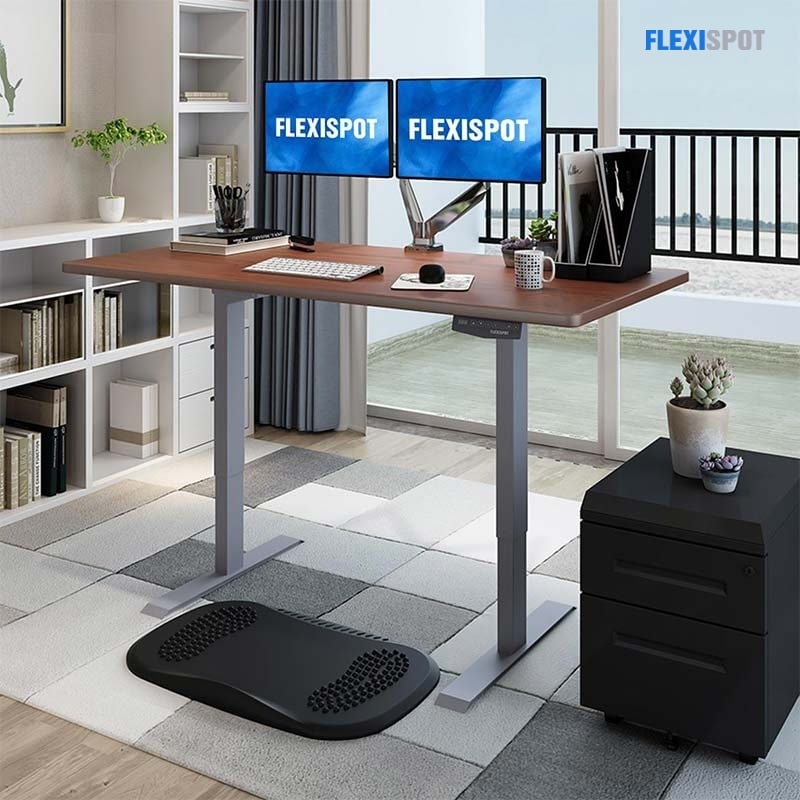Have you felt a difference in your mental health since you started working from home? Work-from-home tasks can be taxing on your mental health. It can transform typically upbeat, productive worker bees into exhausted, unenthusiastic, grumpy toads. Before you reach rock bottom, learn how to recognize the signs of deteriorating mental health, and then you can plan your next actions.
The ability to make money and manage your risk during a fatal pandemic should not be underestimated, but that doesn't necessarily imply it isn't tricky or that you must not feel burned out.
Workplace burnout is not a medical problem or disease, but it is widely acknowledged as a phenomenon that can have significant consequences for our health and well-being.
Burnout is defined as a syndrome caused by excessive workplace stress that is marked by:
- Diminished professional efficacy
- Moods of energy deficiency or fatigue
- Heightened mental distance from one’s work, or feelings of negativism or distrust related to one's work
Working from home is no longer merely a convenience. It is now a requirement for many people.
When your home equals your workplace, it can pose problems setting boundaries, increasing career tension, managing workloads, and other issues. These are just a few reasons why many people find it tough to work full-time from home. Employees who have shifted to working remotely may face additional pressures such as working with children at home and attending to their family's needs while remaining productive and engaged at work.
Common Issues
Stress, Pressure, Anxiety
You most likely work whenever you can. However, if you don't take time to disengage and deactivate, you probably will burn out. The line between work and personal life blurs for employees who work and sleep in the same spot. You may feel compelled to stay online and work when you should be offline, resting, or doing something else.
Loneliness, Isolation
This disconnect from work colleagues and the rest of the world may leave you feeling isolated and lonely. Loneliness is also linked to increased rates of anxiety, depression and, somatic symptoms such as bizarre pain.
Depression
Work-at-home depression can occur when you feel paralyzed. You might not always feel as accomplished as your colleagues if you don't have a new badge on your desk or your fancy corner office. Working from home can cause stress, anxiety, and social isolation, resulting in or exacerbate depression.
According to the Mayo Clinic, depression symptoms include:
- Sleep disturbances (insomnia, excessive sleeping)
- Rage outbursts, moodiness, or frustration, even over small matters
- Exhaustion and a lack of energy cause even minor tasks to require extra effort.
- Absence of pleasure or interest in activities (hobbies, sex)
- Having difficulty concentrating, taking actions, thinking, and recalling information
- Unexplained physical issues (back pain, headaches)
- Dissatisfaction with accomplishments
- Anxiousness, irritability, and restlessness
Working from home does not have to be detrimental to your mental well-being.
If your signs resemble burnout and interfere with your ability to function and happiness, it's best to tell a loved one and seek assistance from a behavioral health provider. Burnout can result in lower productivity, but it can lead to spiritual trauma, depression, and suicidal thoughts when it is severe and chronic. Seek help immediately if you have a desire to harm yourself or others.
Ways to Improve WFH Mental Health
Prioritize Mental Health
Employees can safeguard their mental health at work by taking regular timed breaks throughout the day and during meetings. They can also try to complete their duties using the famous Pomodoro time management method. This allows for breaks where they can do laundry, play with their pets, or take a few minutes to breathe and cultivate a gratitude mentality. When it comes to flourishing in new work environments, a way of thinking is essential. By incorporating some of these behaviors into your daily routine, you can improve your mental health and gain more vitality to be more efficient at work or home.
Phone Calls
In contrast to an in-person session, where you can zone out, most people may feel the need to be very centered and present on a video call, which means no micro-rest attention breaks. If you find yourself exhausted after a day of Google Meet, Zoom, Skype, and other video calling go old school and request phone calls instead.
Routine
When you structure your goals and activities, you mentally prepare yourself for what the day will bring. Then it will be easier to work toward accomplishing the goals you have set for yourself. This planning also keeps tasks that aren't on your to-do list from sneaking into your day. Make time to disconnect from all forms of digital displays. Allow yourself to stretch and rest. Spend a few minutes each day on self-care, hobbies, and anything else that keeps you going.
Roles and Tasks
Many components influence burnout, but working in a line of work that is at odds with your goals and values is a major one. Perhaps you work in an area that you find unsatisfying. Maybe the workplace culture isn't encouraging. Speak with a supervisor about being removed from a frustrating project or added to an exciting opportunity. Take a bit of time to learn new knowledge and skills that you've always wanted to try. Be reasonable — leaving or changing jobs, even if they aren't working, isn't always an option — but every step toward a role you're passionate about will help.
Workspace
If you don't have a designated workspace, make that your primary focus. Extra points if you have a workspace with a door that you can shut to physically and mentally detach your work life and personal life. Dress your workspace as if you want to be the next social media sensation.
DESK
While using your mouse and keyboard, support for your wrists, arms, and elbows will keep the carpal tunnel at bay. Consider height-adjustable standing desks, which encourage movement and prevent you from getting tired of slumping and crouching down or sitting back on your bum all day. FlexiSpot has a lot of great options for you to choose from.
CHAIR
Long work hours require a chair that is supportive of your neck and back. For the curvature of your lower back, look for strong lumbar support. Here, we recommend these stylish and comfortable ergo chairs from FlexiSpot.
ACCESSORIES
You can get into the zone by blasting your focus playlist. For the supreme tether-free work experience, invest in a wireless keyboard and mouse.
You're Fine.
Many employees who work from home are under pressure to demonstrate their worth to their bosses. This may cause you to conceal your difficulties as you adjust to new working conditions and prohibit you from getting relief from workmates and your employer. It may also lead to you taking on more work than you can withstand to demonstrate that you are efficient even when working at home. This is a time when everyone, not just those with authority, must show leadership. You can develop a blooming culture of inclusion, compassion, and productivity within your company if you pave the way by empowering good mental health practices and conversations during team meetings.
If you are suffering from anxiety or depression, consult a trusted friend, your doctor, or seek the help of mental health professional. You are not alone, and it is acceptable to be not okay. Keep in mind that tomorrow is always a new day.


